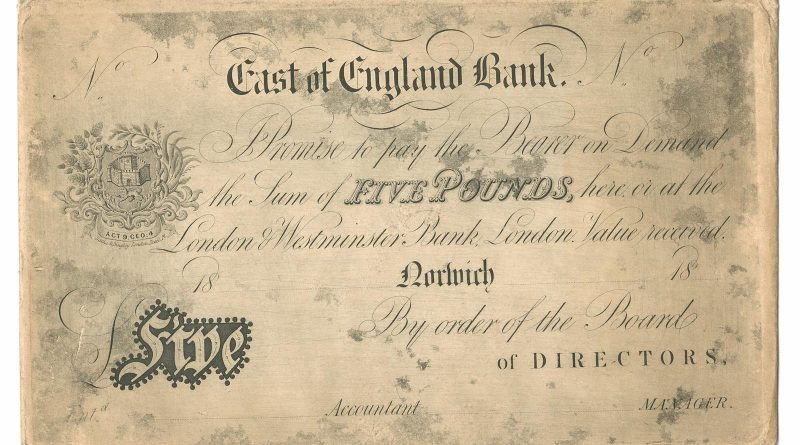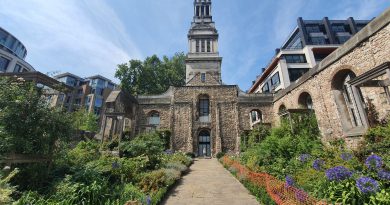London – British Museum (East of England Bank)
I usually visit the British Museum three or four times a year, something which is a little difficult to do with the current virus situation, primarily because it’s shut. However, they’ve placed hundreds of thousands of images on their web-site, so this will have to do me for the moment. The images can be used non-commercially, as long as the British Museum is credited. So, this is their credit.
The technical description for this is an “original envelope for banknote printing plate” which has the Norwich coat of arms on it. Banks in the nineteenth century seemed to be taken over as fast as sausage rolls sell in Greggs, so the whole ownership thing gets complex. I like what this represents, a period of banking revolution in the mid-nineteenth century, when banks were truly local. Although they also kept going bust which wasn’t ideal.
The East of England Bank had already taken over numerous banks, such as the Suffolk Banking Company and the Stable Bank, which I think is a very sensible name for a financial institution. The London & Westminster Bank mentioned on the note was founded in 1834 and later merged with the National Provincial and then that merged with the Westminster Bank, to become Natwest.
Barclays Bank (and I have no idea what involvement they have with all of this and why they hold some of the archives) note that:
“The East of England Bank was established in 1836 with paid up capital of £100,000 and note circulation of £25,000. The bank expanded rapidly, opening 33 branches across Norfolk and Suffolk, but got into difficulty and suspended payment on 20 July 1864. The six directors were a farmer, a retired draper, a clergyman, a surgeon, a retired commercial traveller and a Yarmouth wharfinger. The solicitor’s report said, ‘The Books and Accounts of the Bank are admirably kept and if the management had been as good as the book keeping the . . . state of affairs . . . would not have arrived.’ The company was reconstructed as the Provincial Banking Corporation, which bought the premises, other assets and accounts of the East of England for £11,625 9s. 6d.”
The note, or envelope or whatever it’s called, was issued between 1836 and 1864 and like nearly everything seems to be that I’ve seen, it’s not on display. It was on loan from the Chartered Institute of Bankers between 1987 and 2009, when the British Museum acquired it for themselves.




